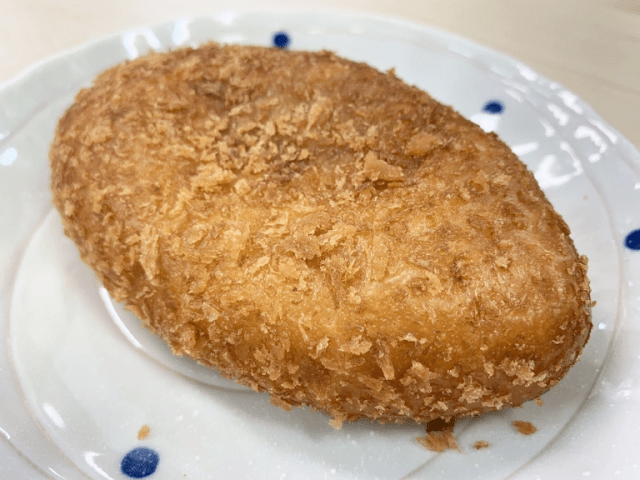
This Tokyo bakery hasn’t changed its curry bread recipe in nearly 100 years, and it doesn’t need to.
There are plenty of historical sites in Tokyo, such as Sensoji Temple, Meiji Shrine, and, of course, the vestiges of Edo Castle, which have been absorbed into the grounds of the present-day imperial palace. But we’re of the mind that the best kind of history is the history you can eat, and thankfully Tokyo delivers on that front too.
In quest to satisfy our hunger for culinary culture, we’ve previously dined at both Japan’s oldest tempura restaurant and also its oldest oyakodon (chicken and egg rice bowl) restaurant, both of which are found in Tokyo. Today, we’re stopping by yet another food history landmark, with a visit to the bakery Cattlea, located in Tokyo’s Koto Ward, near Morishita Station.
Appearance-wise, Cattlea looks pretty much like any other of the countless neighborhood bakeries that dot Japan’s urban landscape. However, you’ll notice a sign in front of the entrance touting its Ganso Curry Bread.
Ganso is the Japanese word for “original,” and while ganso sometimes gets tossed around in marketing talk as a substitute for “old-fashioned,” in Cattlea’s case the Ganso Curry Bread is meant literally, because this was the first bakery in all of Japan to make curry bread, which has since become a staple of bakeries across the country.
When it first went on sale back in the second year of the Showa era, 1927, Cattlea called its creation Yoshoku Bread (“Western cuisine bread”). Right from the start, it was a fist-sized piece of fried bread stuffed with curry, and Cattlea’s present-day bakers still use the exact same recipe, which hasn’t been changed at all in the 90-plus years since.
We bought one to take back to SoraNews24 headquarters, and as the cashier handed us our purchase, we were surprised at how heavy it was. For a second, we thought that maybe Cattlea had generously given us two for the price of one, but nope, inside the bag was a single weighty piece.
So why is Cattlea’s Ganso Curry Bread so heavy? Because unlike a lot of other bakeries’ curry breads, which have a thick outer shell of airy bread and just a dollop of curry at the center, Cattlea’s curry core is vast and voluminous, rewarding you with a veritable flood of curry as you bite into it.
Back at the office, obviously there was a lengthy debate about who should do the taste testing. Eventually, our Japanese-language reporter Seiji Nakazawa convinced us all that he was worthy of the honor, and his thoughts are:
“The curry roux, mixed with carrots, is delicious, and its smooth texture makes for a great contrast with the crisp outer surface of the fried bread.
As I look back on my life, I ask myself, ‘Have I ever had curry bread this delicious before?’
No. The answer is no. This is, without question, the best curry bread I’ve had in my entire life.”
Considering that curry bread is one of those ultra-reliable, even-when-it’s-bad-it’s-still-pretty-good kind of foods, this is high praise indeed. It turns out, though, that there’s a way to make Cattlea’s Ganso Curry Bread even more delicious, which is to stop by the bakery at 7 or 11 a.m., or 3 in the afternoon, which are the three times of day fresh batches come out of the fryer.
▼ Cattlea’s Curry bread time sign
But there’s really never a bad time to get bread this good, and at just 200 yen (US$1.85), there’s also no cheaper time machine to experience something people in Tokyo were enjoying almost 100 years ago just as it was back then.
Bakery information
Cattlea / カトレア
Address: Tokyo-to, Koto-ku, Morishita 1-6-10
Open 7 a.m.-7 p.m. (weekdays), 8 a.m.-6 p.m. (Saturday, holidays)
Closed Sundays
Photos ©SoraNews24
● Want to hear about SoraNews24’s latest articles as soon as they’re published? Follow us on Facebook and Twitter!
[ Read in Japanese ]

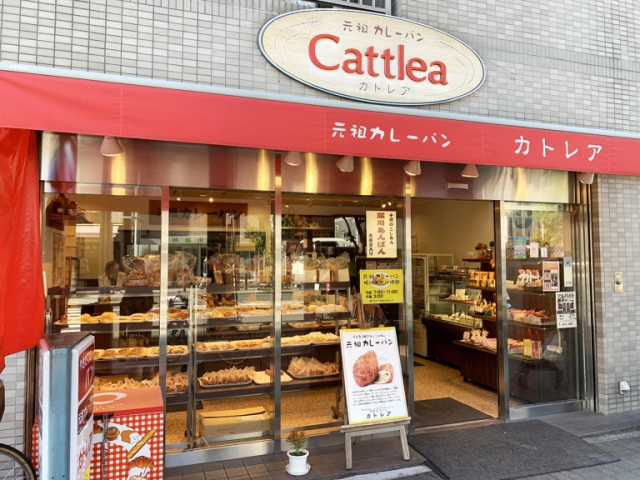
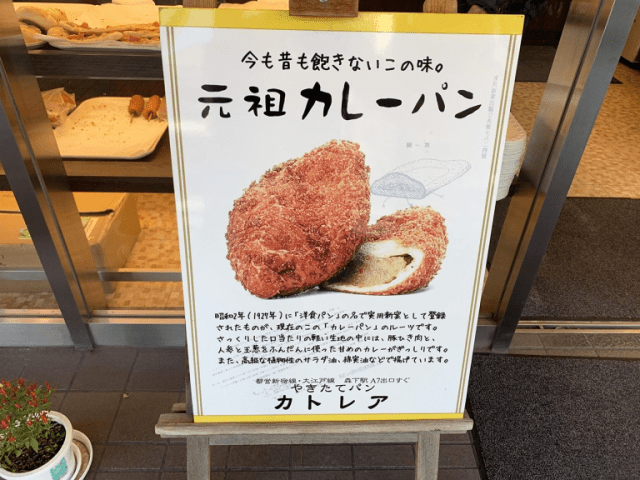

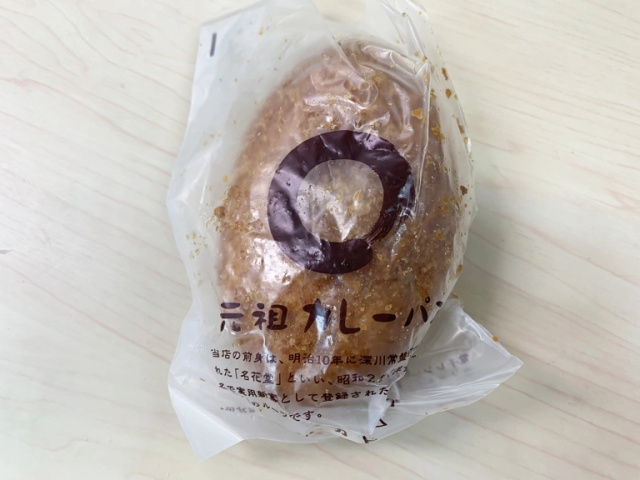
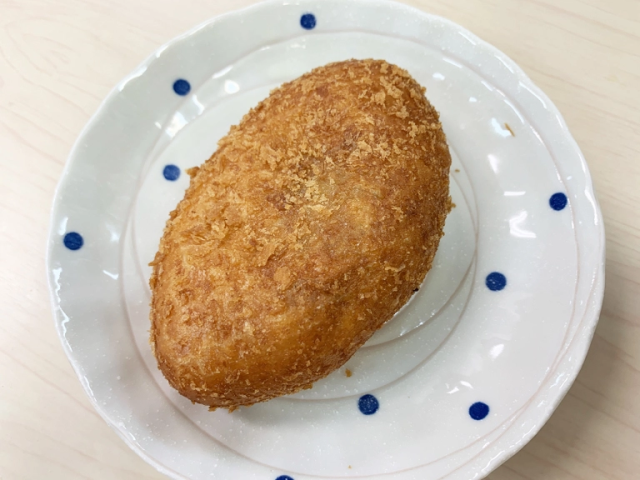


 Fried curry cheeseburger?!? Japan’s oldest burger chain creates a new way to get your curry fix
Fried curry cheeseburger?!? Japan’s oldest burger chain creates a new way to get your curry fix In celebration of Curry Bread Day, we find out which convenience store has the best curry bread【Taste Test】
In celebration of Curry Bread Day, we find out which convenience store has the best curry bread【Taste Test】 Japan’s fried curry hamburger is here, and not quite like anything we’ve eaten before【Taste test】
Japan’s fried curry hamburger is here, and not quite like anything we’ve eaten before【Taste test】 Japanese bakery’s new Vegan Curry Bread is awesome enough to please even carnivores【Taste test】
Japanese bakery’s new Vegan Curry Bread is awesome enough to please even carnivores【Taste test】 Onigiri Bread from Japanese convenience store chain changes everything we know about rice balls
Onigiri Bread from Japanese convenience store chain changes everything we know about rice balls McDonald’s new Happy Meals offer up cute and practical Sanrio lifestyle goods
McDonald’s new Happy Meals offer up cute and practical Sanrio lifestyle goods More foreign tourists than ever before in history visited Japan last month
More foreign tourists than ever before in history visited Japan last month The oldest tunnel in Japan is believed to be haunted, and strange things happen when we go there
The oldest tunnel in Japan is believed to be haunted, and strange things happen when we go there Starbucks reopens at Shibuya Scramble Crossing with new look and design concept
Starbucks reopens at Shibuya Scramble Crossing with new look and design concept Arrest proves a common Japanese saying about apologies and police
Arrest proves a common Japanese saying about apologies and police Disney princesses get official manga makeovers for Manga Princess Cafe opening in Tokyo
Disney princesses get official manga makeovers for Manga Princess Cafe opening in Tokyo Is the new Shinkansen Train Desk ticket worth it?
Is the new Shinkansen Train Desk ticket worth it? Randomly running into a great sushi lunch like this is one of the best things about eating in Tokyo
Randomly running into a great sushi lunch like this is one of the best things about eating in Tokyo Dogs now allowed on Catbus! Ghibli Park vehicles revise service animal policy
Dogs now allowed on Catbus! Ghibli Park vehicles revise service animal policy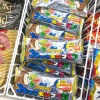 Kyushu-exclusive Black Mont Blanc goes nationwide in a “Special” way
Kyushu-exclusive Black Mont Blanc goes nationwide in a “Special” way We try out “Chan Ramen”, an underground type of ramen popular in the ramen community
We try out “Chan Ramen”, an underground type of ramen popular in the ramen community Foreign English teachers in Japan pick their favorite Japanese-language phrases【Survey】
Foreign English teachers in Japan pick their favorite Japanese-language phrases【Survey】 Beautiful new Final Fantasy T-shirt collection on the way from Uniqlo【Photos】
Beautiful new Final Fantasy T-shirt collection on the way from Uniqlo【Photos】 There’s a park inside Japan where you can also see Japan inside the park
There’s a park inside Japan where you can also see Japan inside the park New Studio Ghibli bedding sets are cool in all senses of the word
New Studio Ghibli bedding sets are cool in all senses of the word Japanese convenience store packs a whole bento into an onigiri rice ball
Japanese convenience store packs a whole bento into an onigiri rice ball Hanton rice — a delicious regional food even most Japanese people don’t know about, but more should
Hanton rice — a delicious regional food even most Japanese people don’t know about, but more should New Pokémon cakes let you eat your way through Pikachu and all the Eevee evolutions
New Pokémon cakes let you eat your way through Pikachu and all the Eevee evolutions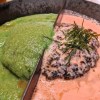 Hamburg and Hamburg Shibuya: A Japanese restaurant you need to put on your Tokyo itinerary
Hamburg and Hamburg Shibuya: A Japanese restaurant you need to put on your Tokyo itinerary Studio Ghibli releases Kiki’s Delivery Service chocolate cake pouches in Japan
Studio Ghibli releases Kiki’s Delivery Service chocolate cake pouches in Japan Japan’s bone-breaking and record-breaking roller coaster is permanently shutting down
Japan’s bone-breaking and record-breaking roller coaster is permanently shutting down New definition of “Japanese whiskey” goes into effect to prevent fakes from fooling overseas buyers
New definition of “Japanese whiskey” goes into effect to prevent fakes from fooling overseas buyers Foreign passenger shoves conductor on one of the last full runs for Japan’s Thunderbird train
Foreign passenger shoves conductor on one of the last full runs for Japan’s Thunderbird train Our Japanese reporter visits Costco in the U.S., finds super American and very Japanese things
Our Japanese reporter visits Costco in the U.S., finds super American and very Japanese things Kyoto bans tourists from geisha alleys in Gion, with fines for those who don’t follow rules
Kyoto bans tourists from geisha alleys in Gion, with fines for those who don’t follow rules Studio Ghibli unveils Mother’s Day gift set that captures the love in My Neighbour Totoro
Studio Ghibli unveils Mother’s Day gift set that captures the love in My Neighbour Totoro Domino’s Japan now sells…pizza ears?
Domino’s Japan now sells…pizza ears? New Japanese KitKat flavour stars Sanrio characters, including Hello Kitty
New Japanese KitKat flavour stars Sanrio characters, including Hello Kitty Kyoto creates new for-tourist buses to address overtourism with higher prices, faster rides
Kyoto creates new for-tourist buses to address overtourism with higher prices, faster rides Sales of Japan’s most convenient train ticket/shopping payment cards suspended indefinitely
Sales of Japan’s most convenient train ticket/shopping payment cards suspended indefinitely Sold-out Studio Ghibli desktop humidifiers are back so Totoro can help you through the dry season
Sold-out Studio Ghibli desktop humidifiers are back so Totoro can help you through the dry season Japanese government to make first change to romanization spelling rules since the 1950s
Japanese government to make first change to romanization spelling rules since the 1950s Ghibli founders Toshio Suzuki and Hayao Miyazaki contribute to Japanese whisky Totoro label design
Ghibli founders Toshio Suzuki and Hayao Miyazaki contribute to Japanese whisky Totoro label design Doraemon found buried at sea as scene from 1993 anime becomes real life【Photos】
Doraemon found buried at sea as scene from 1993 anime becomes real life【Photos】 Tokyo’s most famous Starbucks is closed
Tokyo’s most famous Starbucks is closed One Piece characters’ nationalities revealed, but fans have mixed opinions
One Piece characters’ nationalities revealed, but fans have mixed opinions We asked a Uniqlo employee what four things we should buy and their suggestions didn’t disappoint
We asked a Uniqlo employee what four things we should buy and their suggestions didn’t disappoint Princesses, fruits, and blacksmiths: Study reveals the 30 most unusual family names in Japan
Princesses, fruits, and blacksmiths: Study reveals the 30 most unusual family names in Japan Studio Ghibli’s new desktop Howl’s Moving Castle will take your stationery on an adventure
Studio Ghibli’s new desktop Howl’s Moving Castle will take your stationery on an adventure Tokyo’s Curry Udon Croquette Burger is four of Japan’s favorite foods in one【Taste test】
Tokyo’s Curry Udon Croquette Burger is four of Japan’s favorite foods in one【Taste test】 Kyoto curry bread comes with a very special filling
Kyoto curry bread comes with a very special filling Godiva curry bread from a convenience store? Only in Japan…but should it exist at all?
Godiva curry bread from a convenience store? Only in Japan…but should it exist at all? Calling all fans of anpan! You can try 20 kinds of anpan at this specialty shop in Asakusa
Calling all fans of anpan! You can try 20 kinds of anpan at this specialty shop in Asakusa Muji Ginza’s freshly baked bread is our new favorite thing
Muji Ginza’s freshly baked bread is our new favorite thing We tried the new sake-flavour Kit Kats from Japan and they’re awesome【Taste Test】
We tried the new sake-flavour Kit Kats from Japan and they’re awesome【Taste Test】 103-year-old Japanese curry rice restaurant got dish right a century ago, still serves it today
103-year-old Japanese curry rice restaurant got dish right a century ago, still serves it today Curry and melon bread! Together…at last? Anyway, Yamazaki’s new curry melon bread is here
Curry and melon bread! Together…at last? Anyway, Yamazaki’s new curry melon bread is here Mt Fuji Curry Bread: Worthy of the award and the long waiting list?
Mt Fuji Curry Bread: Worthy of the award and the long waiting list? Where to buy a Curry Bread Grand Prix 2023 award-winning karepan in Japan
Where to buy a Curry Bread Grand Prix 2023 award-winning karepan in Japan Mr. Sato stuffs himself at an all-you-can-eat bakery event and ascends to carb heaven【Pics】
Mr. Sato stuffs himself at an all-you-can-eat bakery event and ascends to carb heaven【Pics】 Can you handle the heat? Japan’s one and only Curry College now enrolling new students
Can you handle the heat? Japan’s one and only Curry College now enrolling new students Tokyo Banana Curry adds capital’s souvenir sweet’s sweetness to roux, but not in Tokyo
Tokyo Banana Curry adds capital’s souvenir sweet’s sweetness to roux, but not in Tokyo What happens when a sweet bun maker teams up with a tonkatsu sandwich specialist?
What happens when a sweet bun maker teams up with a tonkatsu sandwich specialist? Cat-shaped Japanese bread coming to Tokyo!
Cat-shaped Japanese bread coming to Tokyo!
Leave a Reply